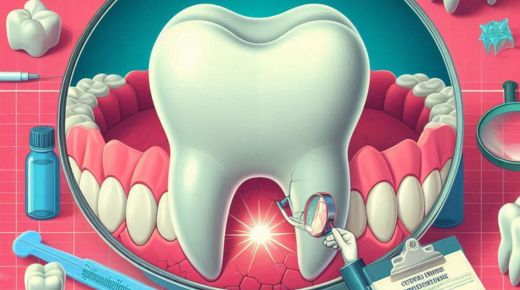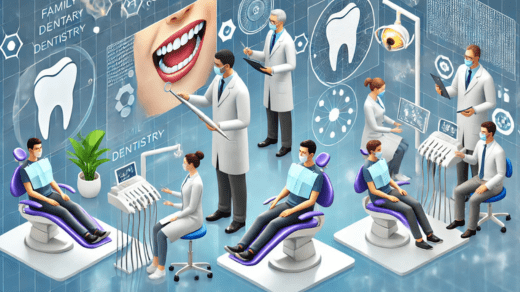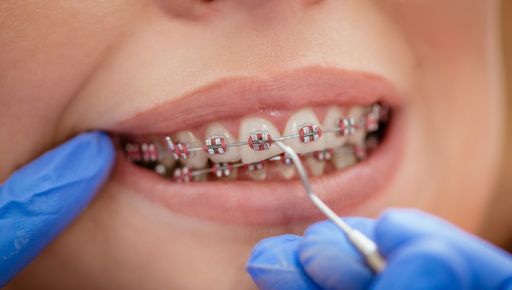Gum disease, a chronic and debilitating condition, affects millions of individuals worldwide, threatening the health and stability of their teeth and overall well-being. Accurate diagnosis is the cornerstone of effective treatment and prevention, enabling dental professionals to identify the severity and progression of the disease. The dental practice in Buffalo Grove offers a detailed diagnosis of gum disease involving a comprehensive clinical examination, advanced diagnostic tools, and tests to assess the extent of gum inflammation, bone loss, and tooth damage.
This article provides an in-depth exploration of the diagnostic process for gum disease, highlighting the importance of early detection and intervention.
Understanding gingivitis
Gingivitis is a mild, reversible form of periodontal disease characterized by inflammation, redness, and swelling of the gums (gingiva) surrounding teeth. Caused by poor oral hygiene, bacterial accumulation, and plaque buildup, gingivitis leads to irritated and bleeding gums. If left untreated, gingivitis can progress to periodontitis, a more severe gum disease that causes irreversible bone and tissue damage. Gingivitis is a preventable and treatable condition, emphasizing the importance of regular dental care, proper oral hygiene, and timely intervention.
Stages of gum disease
Gum disease progresses through several stages:
- Gingivitis: Mild gum inflammation, reversible with treatment.
- Early Periodontitis: Initial bone loss and pocket formation.
- Moderate Periodontitis: Significant bone loss and pocket deepening.
- Advanced Periodontitis: Severe bone loss, tooth mobility, and potential tooth loss.
The importance of early diagnosis and detection of gum disease
Early detection and diagnosis of gum disease are critical for effective treatment, prevention of complications, and maintenance of optimal oral health.
Benefits of early detection
- Prevents Irreversible Damage: Halts disease progression, saving teeth and surrounding tissue.
- Reduces Risk of Systemic Complications: Links gum disease to heart disease, diabetes, and respiratory infections.
- Minimizes Treatment Complexity: Simplifies treatment, reducing cost and recovery time.
- Improves Oral Health: Enhances overall quality of life, boosting confidence and well-being.
- Saves Teeth: Prevents tooth loss, maintaining a natural smile and chewing function.
Exploring the diagnostic process for gum disease
A detailed diagnostic process for gum disease includes the following:
Clinical Examination
The diagnostic process begins with a thorough clinical examination by a dentist or periodontist. This includes:
- Medical history review
- Visual examination of teeth, gums, and overall oral health
- Periodontal probing to assess pocket depth and gum attachment
- Assessment of tooth mobility and sensitivity
Diagnostic Tools
Several diagnostic tools aid in the diagnosis of gum disease:
- Periodontal Probe: Measures pocket depth and gum attachment.
- Radiographs (X-rays): Evaluate bone loss and tooth support.
- Intraoral Camera: Visualizes teeth and gums for accurate assessment.
- Gingival Index: Scores gum inflammation and bleeding.
- Periodontal Charting: Records pocket depth, gum attachment, and tooth mobility.
Diagnostic Tests
Additional tests may be necessary to confirm a diagnosis:
- Microbial Testing: Identifies bacteria causing infection.
- Bone Density Testing: Evaluates bone loss and density.
- Genetic Testing: Identifies genetic predisposition to gum disease.
- Blood Tests: Detects systemic inflammation and infection.
Differential Diagnosis
Differential diagnosis considers other conditions that may mimic gum disease:
- Gingival Recession: Gum recession without bone loss.
- Aggressive Periodontitis: Rapidly progressing gum disease.
- Necrotizing Periodontal Disease: Tissue death and destruction.
- Systemic Diseases: Diabetes, heart disease, and respiratory infections.
Bottom line
Accurate and timely diagnosis of gum disease is crucial for preventing irreversible damage, tooth loss, and systemic complications. Through regular dental check-ups, periodontal screenings, and advanced diagnostic tools, individuals can identify gum disease in its early stages, halting disease progression and improving treatment outcomes. Early detection and intervention not only save teeth but also reduce the risk of associated systemic health issues, such as heart disease and diabetes. By prioritizing oral health and seeking professional care, individuals can ensure optimal gum health, overall well-being, and a lifetime of healthy smiles.





